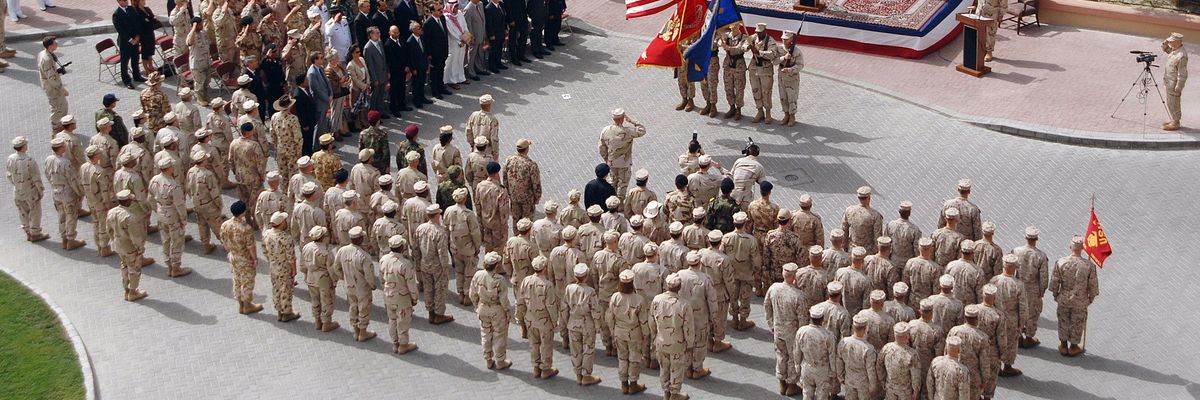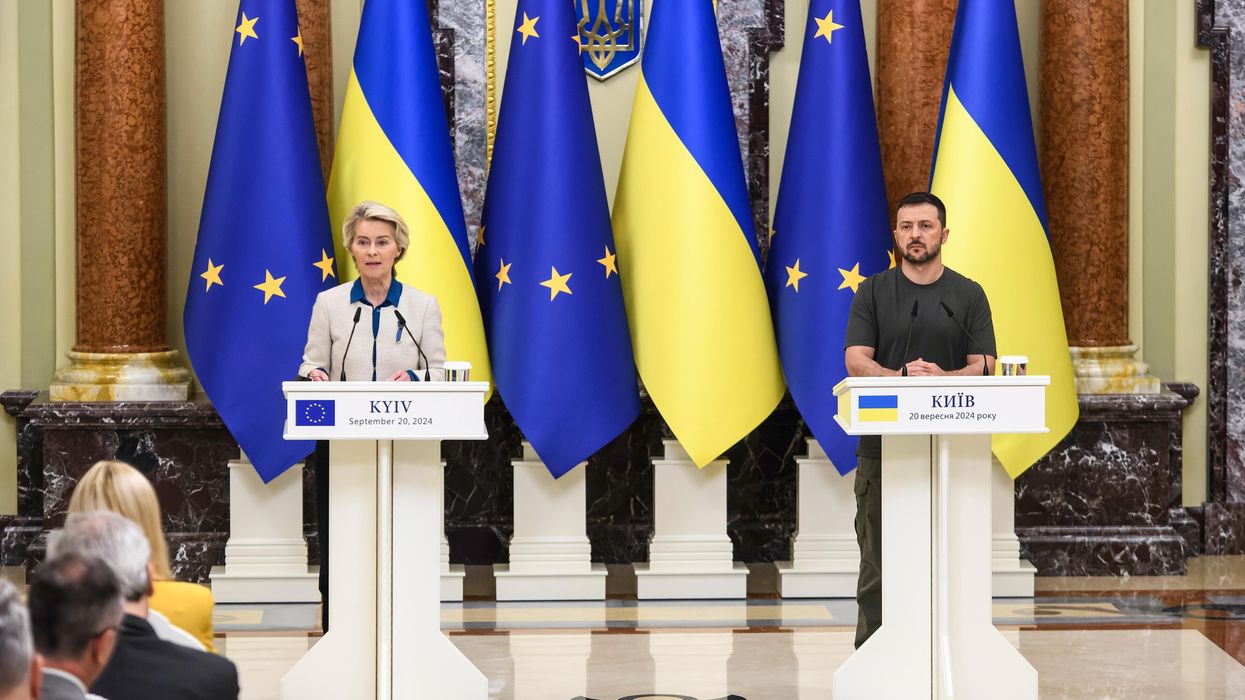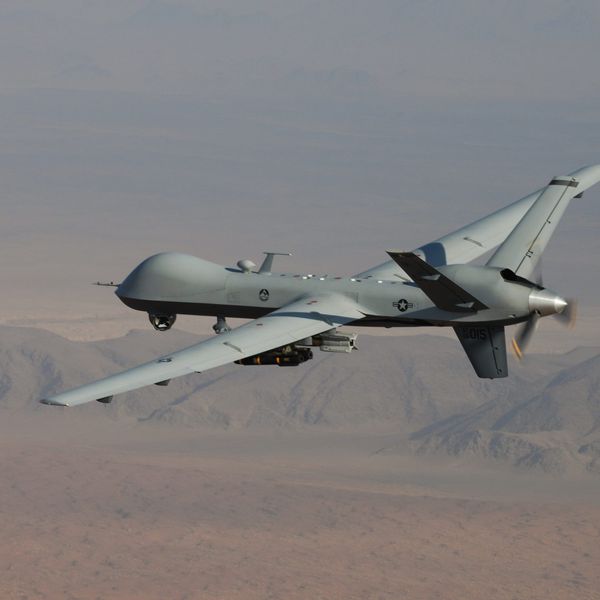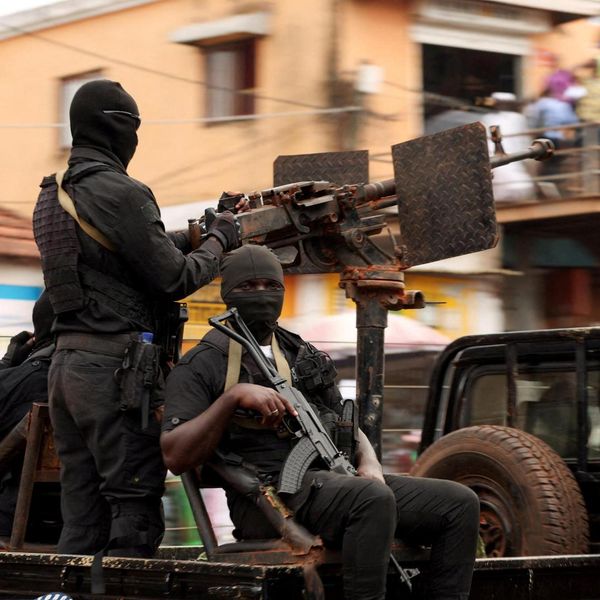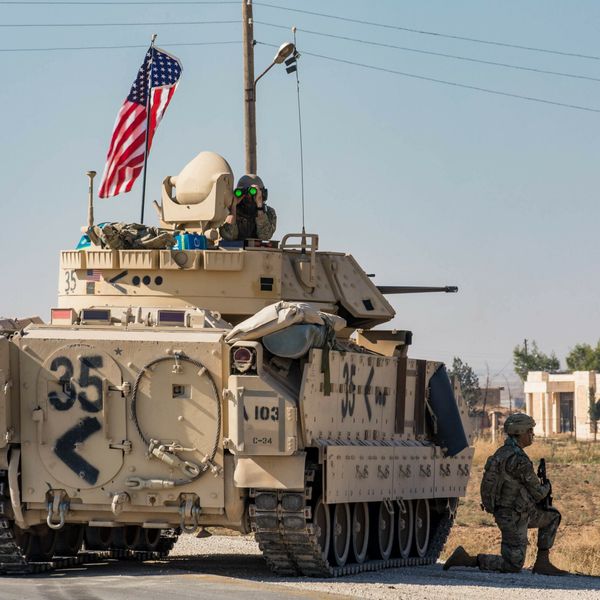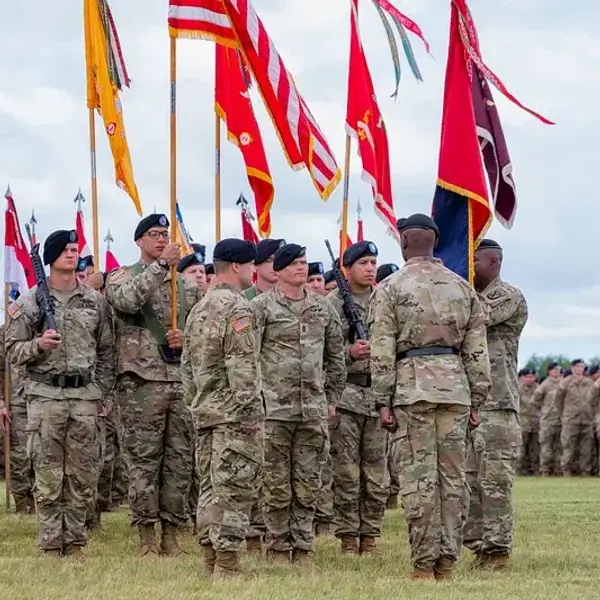Martin Indyk's recent piece in the Wall Street Journal, "The Middle East Isn't Worth It Anymore,” has generated a great deal of commentary. It most assuredly should if simply because the present U.S. leadership appears on the cusp of making still more extraordinarily unwise decisions about the wider region. Whether Syria, Iran, Iraq, Afghanistan, Egypt, Turkey, or elsewhere, the current U.S. administration seems lost, executing at best tactics in a region where strategy is essential, and at worst acting as if it were fundamentally and irreconcilably ignorant of the many complexities of the region and thus incapable of a single strategic thought.
But one huge mistake Indyk makes in his article is to omit a precise description of the decisive breaking point in the U.S. approach to the region that more or less precipitated much of today's strategic confusion — confusion that majorly accelerated and deepened from 2001 to 2005 with the administration I served. In short, it did not require the strategic incoherence of the Trump/ Pompeo/Esper/Graham/Bolton "maximum pressure" campaign with respect to Iran to illuminate U.S. perfidy and inherent imperialist intent. Such policy characteristics have been those of U.S. presidents almost since the Cold War's end. Trump and his gang just slipped off the protective covers — and most blatantly and thus noticeably in Southwest Asia (SWA) and the Middle East and Africa (MEA).
From the end of World War II, through the U.S.-British engineered coup d'état in 1953 that overthrew Iran's leader Mohamad Mosadegh and installed the Shah in his place, and then up until the overthrow of the Shah a quarter century later, U.S. strategy for SWA — and largely for MEA as well — could be summed up as "off-shore balancing" (OSB).
In SWA, using the Shah of Iran as an in-region hegemon who protected our interests, however sometimes grudgingly; then after the Shah's collapse, using the resultant balance of power between Tehran and Baghdad brutally established by the eight-year Iran-Iraq War during which we played both sides, eventually coming down on Iraq's, we maintained regional stability (or instability) to suit our strategic interests. Military operations such as Earnest Will, Praying Mantis, and Eldorado Canyon were examples of OSB. The former two featured U.S. Navy operations to protect reflagged Kuwaiti oil tankers from Iranian attacks at the end of the Iran-Iraq War, and the latter, conducted two years earlier on April 15, 1986, taught Libya's leader, Muammar Gaddafi, that terrorist attacks on the U.S. or its people would be repaid in kind.
When Ayatollah Khomeini "drank the hemlock,” as he allegedly and dolefully declared at the Iran-Iraq War's end, stating that he could not fight both Iraq and the U.S., the region's balance seemed restored. Then, our ostensible ally Iraq invaded Kuwait.
Operation Desert Shield/Desert Storm (DS/DS) ensued. In that use of military force, the U.S. and its Saudi, Syrian, Egyptian, French, Italian, Bangladeshi, Czech, and British allies fulfilled the United Nations mandate by restoring the territorial boundary of Kuwait — "kicking the Iraqi Army out of Kuwait,” as my boss at the time, General Colin Powell, colorfully described it. The U.S. did not go to Baghdad subsequently and thus did not rupture the carefully-maintained regional balance of power. But, sadly, the U.S. did leave ground forces in the region, the beginning of the end of the very wise strategy of OSB. (Moreover, not only did that decades-old successful strategy begin to change, Osama bin Laden announced in a fatwa that the presence of these remaining U.S. ground forces near the Holy Sites of Islam in part caused him and his group al-Qaida to decide on attacking the U.S. homeland. That, however, is another matter.)
The change in U.S. troop disposition following DS/DS fed the insatiable desires of the U.S. Army and U.S. Air Force to get back in the defense game substantially. The end of the Cold War had to an extent left both services high and dry, worried daily about their shares of the defense budget as President George H.W. Bush directed an end-of-war peace dividend be delivered to the American people. When in 1993 President Clinton's Secretary of Defense Les Aspin demanded an even larger payback, the Army and Air Force began to respond to what was happening in SWA and MEA.
Their response would result in the largest and most expensive lay-down of U.S. military forces ever seen in the regions — perhaps even if totaled up, in the world — as well as, in another move considered unwise by the U.S. joint military leadership for more than half a century, the eventual creation of a unified command (a demarcated regional military command) for Africa. For decades the Joint Chiefs of Staff had willingly consigned that area to the State Department, and very wisely so. Now, it was to be the military's purview, very unwisely so.
If we simply glance across SWA, from the minor force component at Incirlik in Turkey, to the largest logistic/force-reception complex on earth in Kuwait, to what is probably the largest air force base on Earth at al-Udeid in Qatar, to the U.S.'s largest Navy fleet headquarters in Bahrain, to the massive complex — compared often to the U.S. complex at Cam Ranh Bay in Vietnam at the height of that war — at King Khalid Military City in Saudi Arabia, to the first-ever U.S. military base in Israel, then we begin to comprehend the enormity of the change. Not to mention what the U.S. Army had salivated over for years, a unified command in Tampa that was no longer just some U.S.-based headquarters buildings nearly 8,000 miles from the region, but now possessed of an almost commensurate command structure actually on the ground in the region, U.S. Central Command (Forward). This command, now at al-Udeid air base, today manages more war than all the other unified commands combined — from Afghanistan, to Syria, to Iran, to Iraq, to Yemen. Its cohort, U.S. Africa Command, though its wars are less developed, is no piker, with drone bases, counter-terrorist forces, and counter-terrorist training all over Africa but particularly around the Sahel region and in Djibouti on the Red Sea.
In short, today the U.S. is on the ground in the regions big time. The OSB strategy is clearly a bygone concept and having boots on the ground is the order of the day — and, as is increasingly the case with a military whose troops are far too expensive for an increase in size — there are contractors scattered all over the regions as well. There are so many contractors, in fact, that on any given day, as one chairman of the Joint Chiefs of Staff recently admitted, no one at the Defense Department can point out precisely how many or what they cost.
Along with a discarded OSB strategy is a broken balance of power, one reason for today's utterly confused U.S. policy vis-a-vis Baghdad. From the invasion of Iraq in March 2003 to the completed U.S. troop withdrawal in 2011, the U.S. itself was the balancer in SWA, a disastrous strategic position to be in because it required near-permanent occupation — lots of "boots on the ground" — to be effective. President Obama was correct to extricate the U.S. from such a position, but wrong not to immediately begin to ensure Baghdad would return to the role of balancer, that along with that return would be a U.S. transition back to OSB and exquisitely-practiced U.S. diplomacy. Obama can be somewhat forgiven because he had the warmonger-in-chief, Hillary Clinton, as his secretary of state and, later, her male clone, John Kerry.
Such exquisite diplomacy today must have as one of its primary objectives helping Baghdad to once again balance Tehran. Such diplomacy means above all ensuring a government in Baghdad that, at a minimum, looks after the basic interests of both the Sunni and Shiite segments of its population. Economic and financial assistance can play a huge role in the persuasive power of this diplomacy — contrasting sharply with the brutal, war-like policy of massive sanctions that the U.S. presently practices with respect to Iran.
On balance, Ambassador Indyk seems to lament what he simultaneously suggests might be necessary, i.e., the fulfillment of what President Trump has alluded to as his ultimate purpose for the regions since his campaign in 2016: to withdraw all U.S. military forces. Indyk is right but for the wrong reasons, including most dramatically for him — he is a two-time ambassador to Israel after all — his argument that Israel today can take care of itself.
One need only look at the tenuous nature of Israel's alliance of convenience with the world's greatest state sponsor of terrorism, Saudi Arabia, to understand the danger Israel confronts. Aside from the inevitable outcome of a fully apartheid Jewish state, probably in less than a single decade, Israel is anything but protected by the U.S.-introduced chaos in SWA as the U.S. neoconservatives predicted when they pushed powerfully and successfully for the invasion of Iraq in 2003. Sooner rather than later, the weight of 425 million Arabs on less than nine million Israelis (almost two million of whom are Arabs) will begin to turn the tide. And Tehran with nuclear weapons — a very possible result of Trump's maximum pressure policy — will balance Jerusalem's nuclear weaponry. A deadly standoff is the best outcome one can envision, a standoff in which an apartheid Israel becomes more and more an isolated state in the community of nations, just as South Africa was at the end of its apartheid period.
Israel's security, apartheid state or otherwise, remains in America's interest, though a far more even-handed policy toward that state is long overdue. Ensuring the oil and gas flow from
SWA — despite non-expert views of U.S. sufficiency — protecting freedom of navigation, and aiding with the settlement of conflicts in Yemen, Somalia, Syria and elsewhere do as well. Counterterrorism efforts are also still important, though far less essential than the U.S. national security state continues to evaluate them. Security in the Bab al-Mandeb and the Red Sea area is crucial as well because that area is becoming a cockpit of potential rivalries, transnational crime, and desperate peoples. In fact, the Red Sea and the Bab al-Mandeb are rapidly becoming more critical than the Persian Gulf and the Strait of Hormuz. Preparing for the inevitable collapse of the ruthless governments in Riyadh, Bahrain, Egypt (yet again), and perhaps in NATO ally Turkey, is also crucial. There is much to look after in these regions that America has recently helped to make so unstable and volatile.
And adding to these regions' challenges, there is every scientific reason to believe that the coming climate crisis will produce some of its earliest and most devastating impacts in many of the countries there, including Iran, Iraq and Syria. Desertification, lack of water, excessive temperatures — some so high they will be extremely threatening even to human life — salinization of soil and riverine structures, and other negative impacts are likely in the regions' future (indeed, some are already in their present). Seemingly an exception, Iran's recent rainfall and concomitant flooding — some areas experienced 70 percent of their average annual rainfall in a single day — was no exception at all, as most climate models demonstrate such anomalies as too-abundant water in short periods while a general and increasing lack of water proceeds apace.
No, it is not time to abandon the regions. Instead, it is time to be wise, to think strategically, and to return to diplomacy and OSB. Like an orchestra with the right instruments, to borrow a metaphor from Frederick the Great, such a combination is the only way to deal successfully with the regions.

